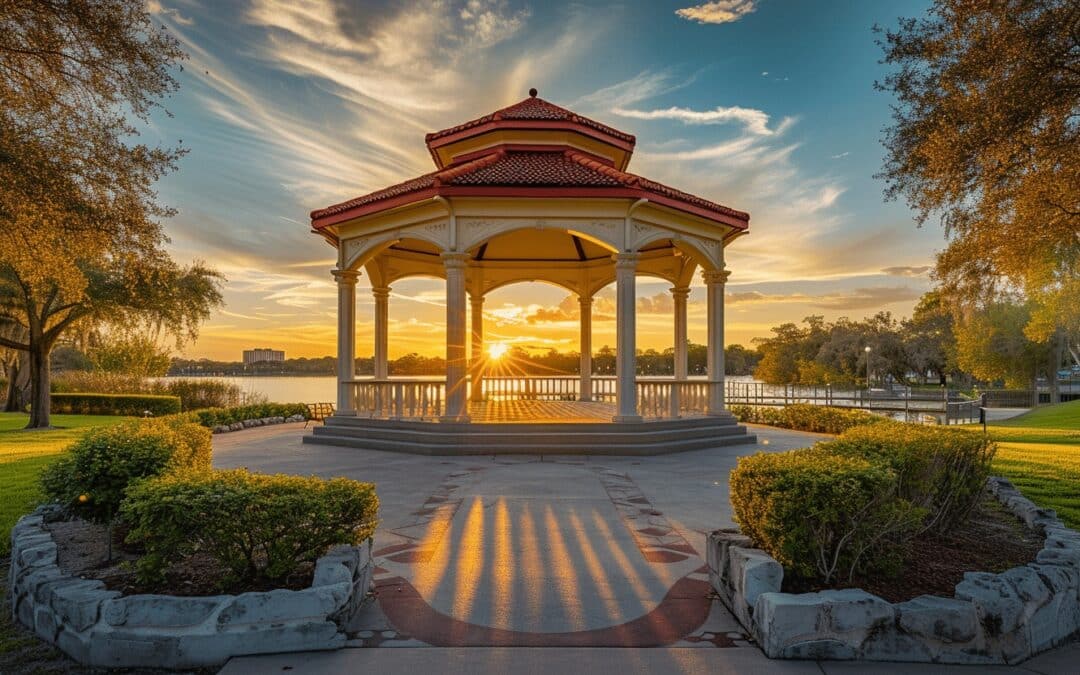Creating a durable outdoor shade structure involves selecting the right materials to withstand various weather conditions while maintaining aesthetic appeal. In this blog, we will explore the best materials for durable outdoor shade structures, offering insights into their benefits and how to choose the right one for your needs.
The Importance of Choosing the Right Material
Choosing the right material for your outdoor shade structure is crucial for several reasons:
- Durability: The material should withstand harsh weather conditions, including strong winds, heavy rain, and intense sunlight.
- Aesthetic Appeal: The material should complement your outdoor space’s overall design and aesthetic.
- Maintenance: Consider materials that require minimal maintenance to retain their appearance and functionality over time.
- Cost-Effectiveness: Balance the initial cost and long-term benefits, including longevity and maintenance costs.
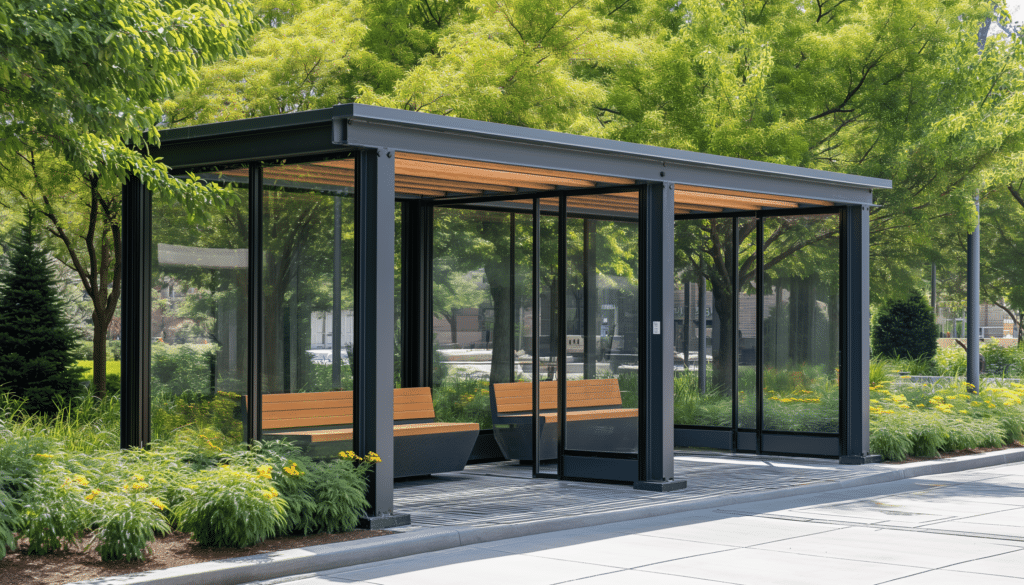
Primary Considerations:
- Climate: Local climate conditions should influence your material choice.
- Usage: How frequently and for what purpose will the shade structure be used?
- Budget: Aligning the material choice with your budget constraints.
Top Materials for Durable Outdoor Shade Structures
1. Wood
Wood is a classic choice for outdoor shade structures, offering a natural and warm aesthetic. However, not all wood types are suitable for outdoor use.
Types of Wood:
- Cedar: Naturally resistant to rot and insects, making it an excellent choice for outdoor structures.
- Redwood: Known for its durability and decay resistance, it has a beautiful, rich color.
- Pressure-Treated Pine: More affordable and treated to resist rot and insect damage.
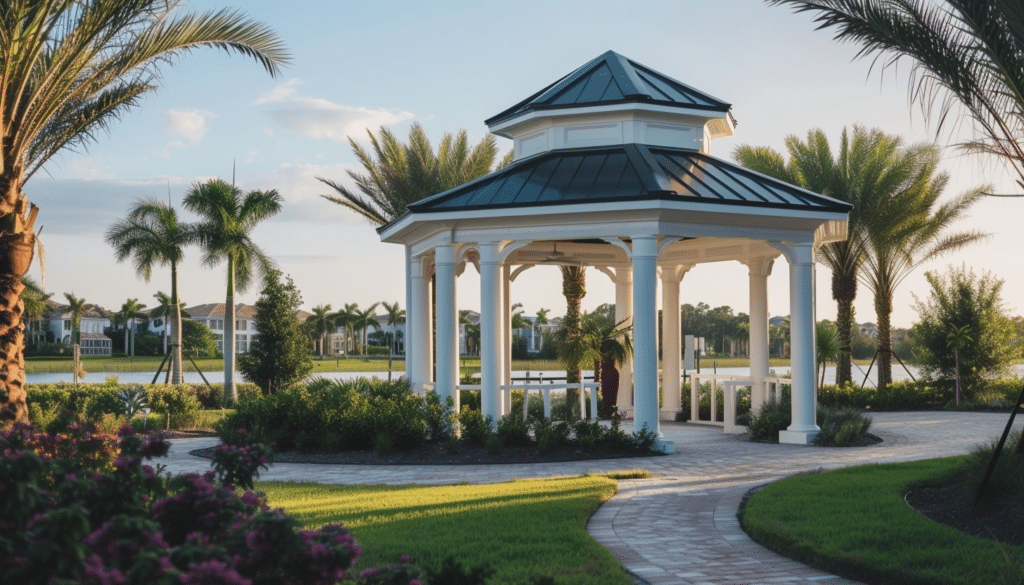
Advantages:
- Natural beauty and warmth
- It can be painted or stained to match any design
- Strong and durable
Disadvantages:
- Requires regular maintenance, such as sealing and staining
- Prone to warping and splitting if not properly maintained
2. Metal
Metal structures, including steel and aluminum, offer a modern and sleek look while providing excellent durability.
Types of Metal:
- Steel: Extremely strong and durable, often galvanized or powder-coated to prevent rust.
- Aluminum: Lightweight, corrosion-resistant, and requires minimal maintenance.
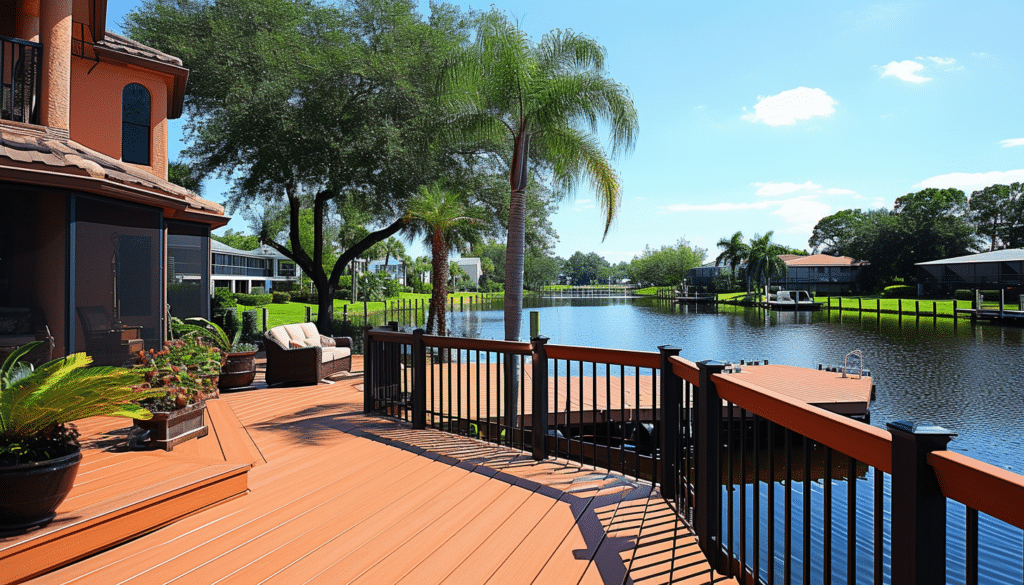
Advantages:
- High durability and strength
- Low maintenance, especially aluminum
- It can be designed in various modern styles
Disadvantages:
- It can be expensive, especially stainless steel
- Metal structures can become hot under direct sunlight
3. Vinyl
Vinyl is a versatile, low-maintenance material that is becoming increasingly popular for outdoor shade structures.
Advantages:
- Resistant to rot, insects, and weather damage
- Requires minimal maintenance
- Available in a variety of colors and styles
Disadvantages:
- Can fade over time with prolonged exposure to sunlight
- Not as strong as wood or metal structures
4. Composite Materials
Composite materials, made from a combination of wood fibers and plastic, offer the benefits of both materials.
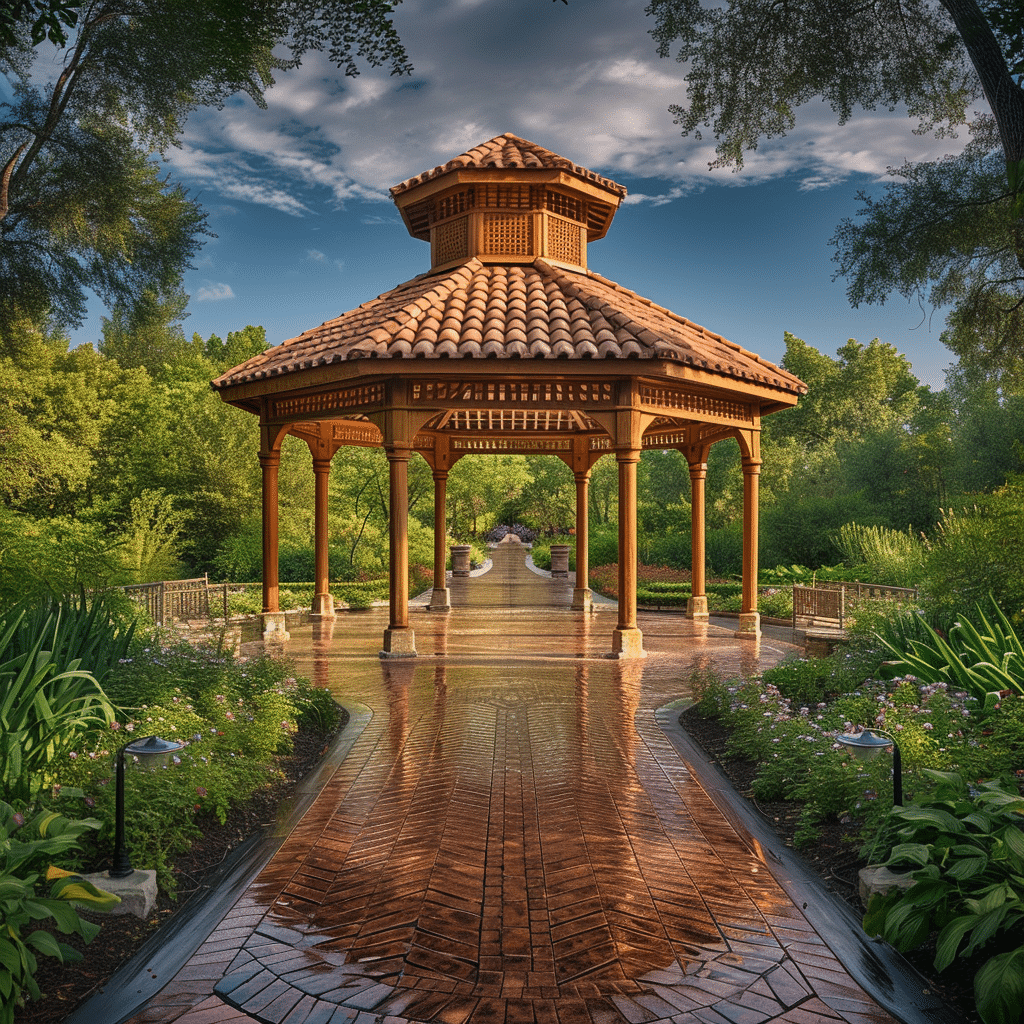
Advantages:
- Highly resistant to rot, insects, and weather damage
- Low maintenance and durable
- Available in various colors and styles
Disadvantages:
- It can be more expensive than traditional wood
- It may not have the same natural look and feel as real wood.
Best Practices for Maintaining Durable Outdoor Shade Structures
Regular Maintenance Tips:
- Cleaning: Regularly clean your shade structure to prevent dirt, mold, and mildew buildup. Use appropriate cleaning solutions based on the material.
- Inspections: Periodically inspect the structure for any signs of damage, such as cracks, rust, or rot. Address these issues promptly to prevent further damage.
- Sealing and Staining: For wood structures, apply sealant or stain every few years to protect against moisture and UV damage.
- Painting: Metal and vinyl structures may require repainting to maintain their appearance and protect against weathering.
Conclusion
Selecting the best material for your durable outdoor shade structure is essential for ensuring longevity, functionality, and aesthetic appeal. By considering the benefits and drawbacks of wood, metal, vinyl, and composite materials, you can make an informed decision that meets your needs. Regular maintenance and proper care will further enhance the durability and beauty of your shade structure, providing a comfortable and attractive outdoor space for years to come.
FAQs
1. What is the most durable material for an outdoor shade structure?
- Answer: Metal, particularly steel and aluminum, is considered the most durable due to its strength and resistance to weathering.
2. How often should I maintain my wooden shade structure?
- Answer: Wooden structures should be sealed or stained every 1-3 years, depending on the local climate and exposure to the elements.
3. Can vinyl shade structures withstand strong winds?
- Answer: Yes, vinyl structures are designed to be durable and can withstand strong winds when properly installed and anchored.
4. Are composite materials more expensive than traditional wood?
- Answer: Composite materials can be more expensive initially, but they offer long-term savings due to their low maintenance requirements and durability.
5. How do I choose the right material for my shade structure?
- Answer: When choosing the right material, consider your local climate, budget, aesthetic preferences, and maintenance capabilities.
Final Thoughts
Embrace the possibilities and transform your outdoor areas with the right shade structure that combines durability with style. Whether you opt for the classic appeal of wood, the modern look of metal, or the versatility of vinyl or composite materials, a well-chosen shade structure will enhance your outdoor experience and add value to your property.

I’m Elliot Bock, an expert at Total Site Amenities, specializing in transforming outdoor spaces. With a focus on aesthetic and functionality, I work closely with project managers and HOAs to tailor each project to their unique needs. My approach simplifies the complex, making me a trusted partner in crafting personalized outdoor solutions. My passion lies in enhancing community spaces, ensuring every project delivers both beauty and practicality.

